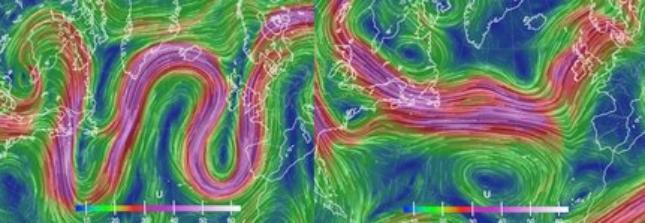Dr Grzegorz Muszynski’s PhD success

Congratulations to Dr Grzegorz Muszynski who successfully passed his viva on the 22nd of January 2021 (subject to very minor corrections). Grzegorz's PhD "Pattern Recognition for Weather Phenomena in Climate Data" was supervised by Dr Vitaliy Kurlin from Computer Science and Dr Michael Wehner from the Lawrence Berkeley National lab (US). This project was co-funded by Intel and featured in the university news.
You can read full details of Dr.Muszynski's PhD below:
Grzegorz Muszynski’s PhD Pattern Recognition for Weather Phenomena in Climate Data
Defended on 22nd January 2021 in the Computer Science department, the University of Liverpool, UK.
Supervisors: Vitaliy Kurlin (University of Liverpool), Michael Wehner (Lawrence Berkeley National Lab)
Examiners: Prof Gabriele Hegerl FRS (University of Edinburgh), Prof Frans Coenen (Univ. of Liverpool)
Grzegorz’s PhD was funded by Intel and Berkeley lab through the Intel Parallel Computing Centre at Liverpool. This project was announced in the university news and highlighted in HPC Wire. Grzegorz secured a full-time job in the Artificial Intelligence Lab, the British Antarctic Survey, Cambridge, UK.

Above: water vapour field (kg m-2). Left: an Atmospheric River (AR) has a filamentary structure. Right: this non-AR event hints at even more water vapour, but has no clear narrow structure. The PhD developed a method for identifying Atmospheric Rivers in climate model simulations [1,3,4] combining Topological Data Analysis with Machine Learning, without using any thresholds on physical variables.

Above: the wind speed field in m/s. Left: an Atmospheric Block (AB) has a shape of the Greek letter omega. Right: a non-AB event does not cause unusual changes in the normal flow of zonal winds.
Also the PhD proposed a hierarchical pattern recognition method for predicting locations and spatial extent of Atmospheric Blocking (AB) phenomena in multivariate climate reanalysis data [2]. The PhD research outcomes show that Topological Data Analysis and Machine Leanring can be complementary tools to the existing identification methods of Atmospheric Rivers and Blocks in Climate Science.
[1] Muszynski et al. “Topological data analysis and machine learning for recognizing atmospheric river patterns in large climate datasets.” Geoscientific Model Development, v. 12, p. 613-628, 2019.
[2] Muszynski et al. “Atmospheric Blocking Pattern Recognition in Global Climate Model Simulation Data”. In Proceedings of the 25th International Conference on Pattern Recognition (ICPR), 2020.
[3] Shields et al. “Atmospheric River Tracking Method Intercomparison Project (ARTMIP): project goals and experimental design.” Geoscientific Model Development, v. 11, 2455-2474, 2018.
[4] Rutz et al. “ARTMIP: quantifying uncertainties in atmospheric river climatology.” Journal of Geophysical Research: Atmospheres, v. 124 (24), 2019, p. 13777-13802.
Grzegorz's success will be also highlighted by Oxford colleagues in a 1-page summary of his PhD on their webpage of the centre for TDA, here.